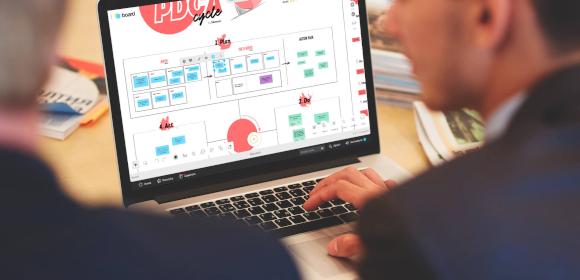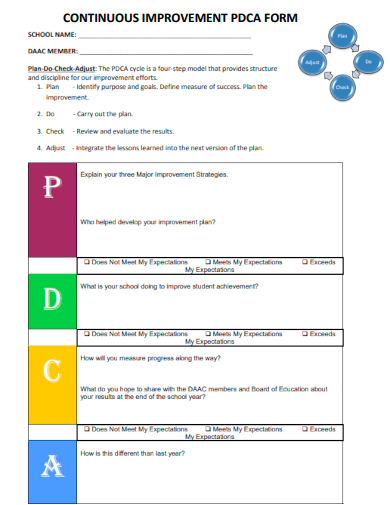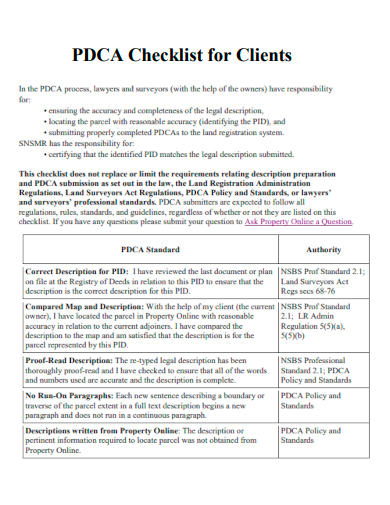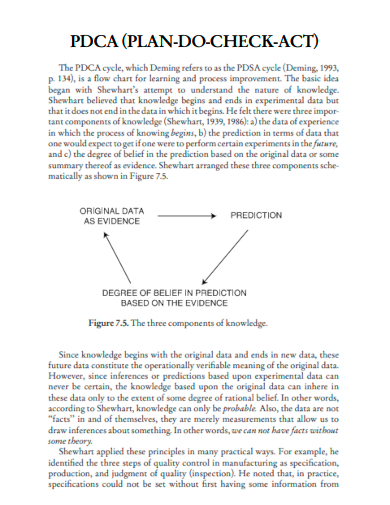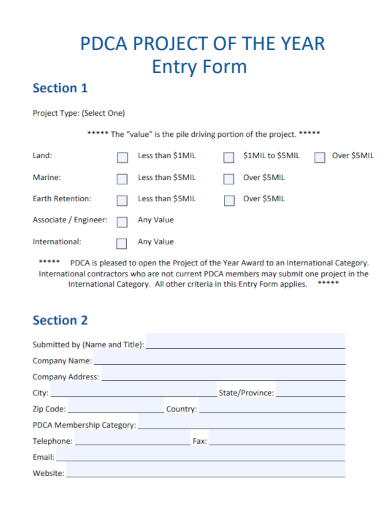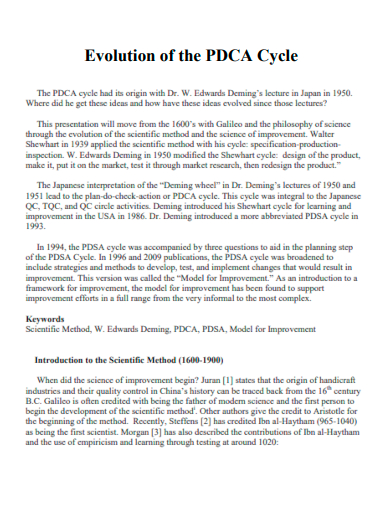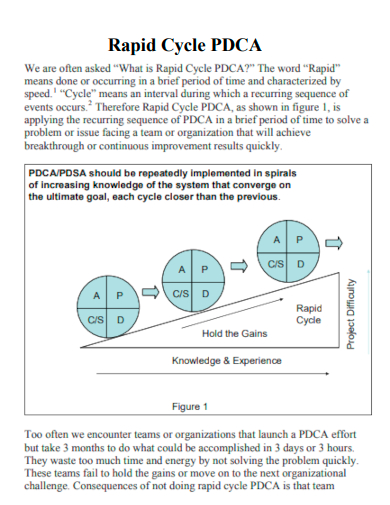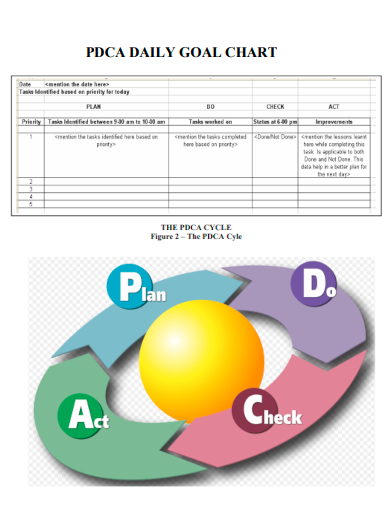Walter Shewhart, an American statistician and physicist, is regarded as the founder of PDCA. He was enthusiastic about statistical analysis and quality improvement, and he laid the groundwork for the PDCA method, which has been documented in multiple publications. Years later, William Deming, inspired by Shewhart’s ideas, extended the concept into a continuous improvement cycle known as PDCA. The model is sometimes known as the Shewhart cycle or the Deming cycle because of this. The PDCA cycle is a continuous improvement approach for products, people, and services. It eventually evolved into what is currently known as Lean management. Testing solutions, assessing findings, and improving the process are all part of the Plan-Do-Check-Act methodology.
10+ PDCA Templates Samples
The Plan-Do-Check-Act (PDCA) cycle, often referred as the Deming wheel or the Deming cycle, is a cyclical strategy for improving processes, goods, or services that is a core component of lean management. The majority of companies strive to improve. However, when it comes to implementing the necessary changes, many people fall short. Bureaucracy, silos, and even mindset can stifle advancement and innovation. The Plan-Do-Check-Act cycle aids in the transition of businesses from stagnation to constant improvement. The PDCA cycle is a loop instead of an end-to-end mechanism, as all of these titles suggest. In a continuing learning phase and progress, the focus is to enhance on each improvement.
1. Continuous Improvement PDCA Form
2. PDCA Checklist for Clients
3. Sample PDCA
4. PDCA Project of the Year Entry Form
5. Evolution of the PDCA Cycle
6. Rapid Cycle PDCA
7. PDCA Daily Goal Chart
The PDCA Model
To begin utilizing PDCA cycle, learn the four steps (as you could expect from the name).
Plan
The planning step is where you lay out your strategy for solving an issue or otherwise altering a process. This process involves identifying and evaluating information or change opportunity, developing hypotheses about the underlying problems or causes, and selecting one hypothesis to test first. An affinity diagram can assist you and your coworkers in grouping a huge number of ideas at this phase. Write out your predicted outcomes once you’ve decided on a course of action. In the “Check” phase, you will compare your findings to your assumption and expectations.
Do
The next stage is to put your assumption to the test (i.e., your proposed solution). The PDCA cycle focuses on tiny, incremental adjustments that improve operations while causing the least amount of disruption. Test your idea with a small-scale initiative, ideally in a controlled setting, so you can analyze the findings without disrupting your business. You could want to try out the approach with a single team or a certain demographic.
Check
It’s time to study and analyze the outcomes when you’ve finished your trial. This stage is crucial because it helps you to assess your solution and make any necessary changes. Was the plan successful? If so, were there any snags along the way? What steps in future versions could be enhanced or should be eliminated? Because the outcomes of your evaluation will guide your actions in the next step, it’s critical to think about them thoroughly.
Act
It’s finally time to take action. If everything went according to plan, you can now put your tried-and-true strategy into action. This new approach now serves as the foundation for all subsequent PDCA iterations. If the plan does not go as planned, you can go back to the planning stage and make changes before starting a new experiment.
FAQs
What are some of the basic concerns that needs to be answered before moving to the 2nd stage?
- What is the core problem we need to solve?
- What resources do we need?
- What resources do we have?
- What is the best solution for fixing the problem with the available resources?
- In what conditions will the plan be considered successful? What are the goals?
When to use PDCA cycle?
When should you use the PDCA cycle?
- Starting a new project for improvement
- Creating a new or enhanced process, product, or service design
- Creating a routine labor procedure
- Data gathering and analysis are planned in order to confirm and prioritize problems or root causes.
- Any change requires implementation.
- Dedicated to constant progress
If you want to see more samples and formats, check out some of the PDCA samples and templates provided in the article for your reference.
Related Posts
FREE 8+ Sample Research Paper Outline Templates in PDF
FREE 8+ Sample Monthly Menu Templates in MS Word PDF
FREE 9+ Sample Phone Message Templates in PDF MS Word ...
FREE 17+ Useful Outline Templates in PDF MS Word | Apple ...
FREE 8+ Timeline Templates for Kids in PDF
FREE 16+ Fantastic Printable Newsletter Templates in PDF MS Word
FREE 48+ Contract Agreement Templates in Pages Google Docs ...
FREE 7+ Sample Technical Manual Templates in PDF
FREE 9+ Sample Theatre Resume Templates in MS Word PDF
FREE 44+ Sample Meeting Minutes Templates in Google Docs MS ...
FREE 25+ Printable Christmas Invitation Templates in AI MS Word ...
FREE 13+ Sample Log Sheet Templates in Google Docs Google ...
FREE 13+ Printable Heart Templates in PDF MS Word | PSD
FREE 9+ Settlement Agreement Templates in PDF MS Word
FREE 8+ Sample Sign Off Form Templates in PDF
